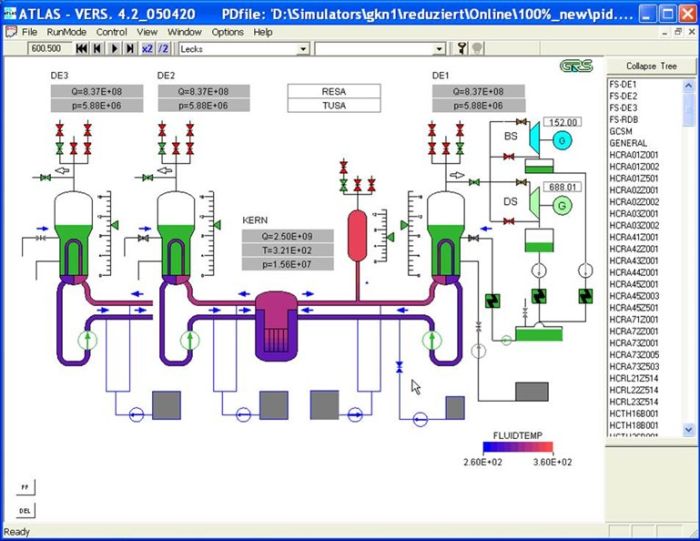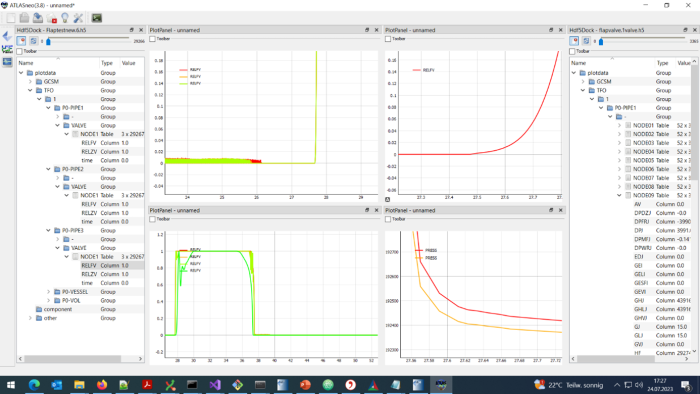ATLAS and ATLASneo - Analysis simulator for interactive plant simulation
Focal points of ATLAS
The underlying goal of the ATLAS development was to provide a standardised simulation environment in which the result data can be displayed graphically and the simulation process can be influenced interactively. The interactive control of the simulation can be carried out with intervention options similar to those in a real power plant.
Calculation codes that can be visualised with ATLAS
ATLAS aims to support, visualise and, in certain areas, control a whole series of dynamic calculation codes that cover a wide range of reactor safety analyses. These currently include
- ATHLET/ ATHLET-CD (GRS, reactor cooling circuit and systems)
- COCOSYS (GRS, reactor containment and building)
- ASTEC (GRS and IRSN, overall plant)
- MELCOR (SNL, overall plant)
- S-RELAP (AREVA, reactor cooling circuit and systems)
These codes include models for the reactor cooling circuit with thermal hydraulics and heat transfer, for reactor systems and I&C, for neutron dynamics, for core destruction processes and the pressure build-up and fission product behaviour in the containment.

Further development from ATLAS to ATLASneo
The ATLAS code is currently being completely revised and modernised. The new version ATLASneo offers a new look and intuitive handling. In addition to controlling various dynamic simulation codes, real data from power plants can also be analysed. ATLASneo makes it possible to flexibly combine the function modules used for analyses.
Interactive simulations support the implementation of operational interventions (manual measures), which can be carried out either manually or by scripts (protocols). ATLASneo can be used on different computer systems (e.g. Microsoft, Linux). ATLASneo supports the HDF5 data format for large simulation data. In order to create meaningful visualisations of data, in future versions it will be possible to use dynamic images in addition to trends.

Use and benefits
At present, ATLAS (and in future probably also ATLASneo) is used by research and supervisory organisations both nationally and internationally for a wide range of applications.
In addition to its use in the preparation of safety analyses, the detailed analysis simulators for German nuclear power plants developed on behalf of the Federal Ministry for the Environment are also worth mentioning. These were used to carry out so-called "human factor analyses" (the training of personnel in the area of severe accidents), with ATLAS serving as a visualisation tool for various calculation codes.